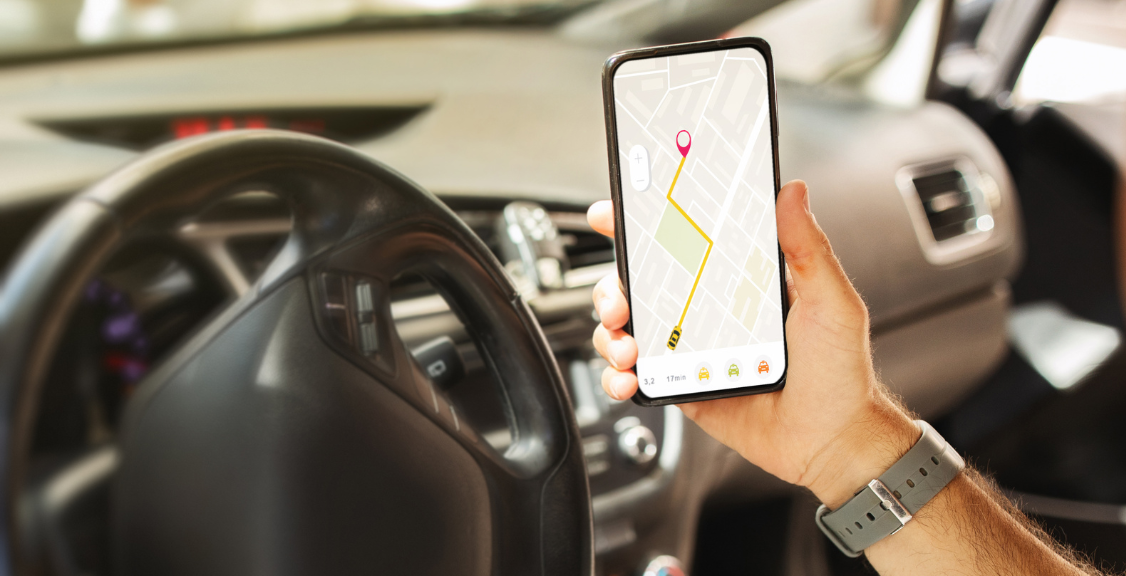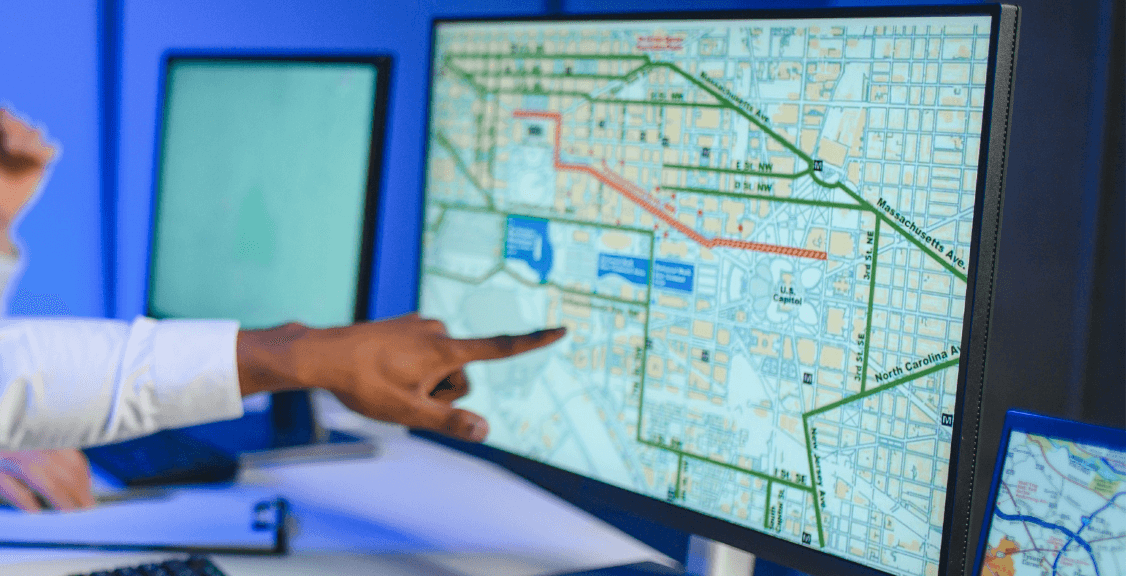Key Takeaways
- GPS trackers provide real-time location, speed, and direction data to monitor vehicle or asset activity.
- Historical tracking data helps optimize routes, improve efficiency, and reduce fuel costs.
- Geofencing features allow users to set boundaries and receive alerts when vehicles or assets enter or exit specified areas.
- Monitoring driver behavior, such as speeding and harsh braking, improves safety and reduces risks.
- GPS tracking data is essential for both business fleet management and personal vehicle security.
Table of Contents
The Comprehensive Guide to Interpreting GPS Tracker Data
What the GPS tracker tells you is not limited to showing the current location. A GPS device provides detailed GPS tracking data such as real-time location, travel history, speed, direction, and driver behavior. This information helps track how a vehicle or asset is used throughout the day, offering clear insights into activity, movement, and patterns. Businesses use this data to improve routes, monitor fuel use, and make sure vehicles are being driven safely and responsibly. Personal users benefit from features like live tracking and location alerts for added security and peace of mind.
The value of GPS tracker information comes from how detailed and accurate it is. With the right system, it is possible to get updates every few seconds, see exactly where a vehicle has been, when it stopped, and how long it stayed there. Features like speed tracking, route history, and geofencing alerts help users take full control of their vehicles and assets. This kind of GPS tracking feature is important for both safety and efficiency, giving users real-time and historical data they can actually use to make smart decisions.
Understanding Real Time Location Tracking
Real-time location tracking shows exactly where a vehicle or asset is at any moment. A GPS tracker sends live updates, often every few seconds, using satellite signals and mobile networks. This gives users a live view of movement on a digital map, they can follow the exact route and current location without delay.

This GPS tracking feature is important for safety, control, and quick response. Fleet managers use it to monitor driver location, check delivery progress, and respond to changes on the road. Personal users rely on it to keep an eye on family vehicles or track valuable items. Real-time location helps recover stolen vehicles, check on late arrivals, and stay informed in fast-moving situations. The accuracy of GPS location data gives users confidence that they’re always seeing the most updated information.
How GPS Tracks Location History and Travel Data
GPS trackers monitor real-time locations and also store historical data. This allows you to view where a vehicle or asset has been. Location history can be accessed through reports, providing insights into past movements, stops, and routes. For businesses, this data is important for optimizing routes, improving efficiency, and keeping track of vehicle usage. For personal use, it helps track the history of a car or asset, offering added security and peace of mind.

- Route History – Shows all the locations the vehicle or asset has visited during a specific period.
- Trip Duration – Records how long a vehicle has been in motion or stopped at each location.
- Stop Times – Tracks how long the vehicle stays at each stop, useful for analyzing efficiency or verifying activity.
- Movement Patterns – Helps identify habits or irregular routes that might need attention (e.g., excessive idling, unauthorized detours).
- Geo-Tagging – Some systems provide location tags for specific places, making it easier to verify locations like job sites or delivery destinations.
With detailed location history and travel data, users can analyze behavior, track past performance, and make data-driven decisions. This type of information is key for improving efficiency, managing fuel consumption, and ensuring that vehicles are used properly. It is also valuable for investigating incidents or verifying reports, adding a layer of transparency and control.
Checking Vehicle Speed and Direction with GPS
GPS trackers not only show a vehicle’s location but also track its speed and direction. This information is essential for monitoring driver behavior, improving safety, and optimizing routes. Knowing how fast a vehicle is moving and in which direction it is heading helps fleet managers and personal users make better decisions about performance and safety. It also helps identify driving patterns, such as speeding or erratic driving, that may need to be addressed.

- Speed Tracking – Monitors how fast a vehicle is moving at any given moment.
- Direction Tracking – Records the direction the vehicle is heading, providing insights into travel patterns.
- Speed Limits – Allows users to set speed thresholds and get alerts when the vehicle exceeds the limit.
- Driver Behavior Insights – Identifies instances of excessive speeding or slow driving that may signal inefficient driving habits.
- Safety Monitoring – Helps ensure that vehicles are driven safely and within legal speed limits, reducing risks and liabilities.
Tracking speed and direction helps businesses ensure compliance with traffic regulations, improve fuel efficiency and promote safer driving habits. For personal users, it adds an extra layer of security and control over how a vehicle is being driven, whether for safety or monitoring the use of a family car.
Setting Up Geofencing Zones and Getting Alerts
Geofencing allows you to set virtual boundaries around a specific area, you can track when a vehicle or asset enters or exits that zone. This feature is highly useful for businesses and personal users, providing alerts when vehicles go off course or enter restricted areas. By setting up geofences, users can improve security, monitor compliance, and track performance more effectively.
![]()
- Create Custom Zones – Set specific geographic boundaries around locations like job sites, warehouses, or homes.
- Get Alerts – Receive notifications whenever a vehicle enters or leaves the designated area, providing real-time updates on its location.
- Monitor Unauthorised Use – Geofencing helps identify unauthorized use of vehicles or assets, such as when they leave a designated area without permission.
- Time-Based Alerts – Set time-based geofencing to monitor when vehicles enter or leave a zone within specific hours, perfect for shift-based operations.
- Improved Fleet Management – Businesses can monitor routes and ensure drivers follow approved paths, improving efficiency and reducing risk.
Setting up geofencing zones helps keep vehicles and assets within designated areas and offers peace of mind by notifying you if something unusual happens. This feature improves both security and operational efficiency, ensuring that vehicles remain on track and within legal or authorized boundaries.
Tracking Driver Behavior and Driving Habits
GPS trackers can monitor a driver’s behavior, providing insights into their driving habits. This data is useful for improving safety, reducing accidents, and encouraging better driving practices. By tracking things like harsh braking, rapid acceleration, and sharp turns, businesses can ensure their drivers are operating safely and efficiently. Personal users can also use this information to track family members’ driving habits and ensure safe driving.

- Harsh Braking – Tracks instances where a driver brakes too quickly, which can indicate aggressive driving or potential hazards.
- Rapid Acceleration – Monitors how quickly a driver speeds up, which can affect fuel consumption and wear on the vehicle.
- Sharp Turns – Records when a driver makes sudden or sharp turns, which can be a sign of unsafe driving behavior.
- Speeding – Flags when a vehicle exceeds speed limits, helping enforce safe driving habits and compliance with traffic laws.
- Idling – Monitors how long a vehicle stays stationary with the engine running, helping reduce unnecessary fuel consumption.
By analyzing driver behavior, businesses can improve driver training, reduce accidents, and optimize fleet performance. For personal users, tracking driving habits adds an extra layer of security and ensures family members are driving safely.
The Role of GPS Trackers in Fleet Management
A GPS tracker provides valuable data about a vehicle or asset, including its location, speed, direction, and other important details. It tracks real-time movement, speed, direction, and behavior, allowing you to monitor and improve efficiency. From route history to speed tracking and driver behavior, these tools offer essential insights that can be used for better decision-making. Businesses benefit from optimizing routes, reducing fuel consumption, and improving driver safety, while individuals can monitor their vehicles for security, ensure safe driving, and track asset usage. Additionally, geofencing features allow you to set limitations for vehicles and receive alerts when those areas are entered or exited, further improving control over usage.
![]()
By utilizing GPS tracking data, users gain a comprehensive view of vehicle activity, enabling improved management and better security. For businesses, this means optimizing fleet performance and reducing operational costs. For personal use, it offers peace of mind, knowing that a vehicle is being used safely and efficiently. The ability to track speed, direction, and driving habits gives both businesses and individuals the tools needed to make informed decisions that improve safety, security, and overall vehicle management. GPS trackers offer a solution to enhance efficiency, ensure better compliance, and provide detailed insights into how assets are being used.
Customer Support for Smooth GPS Tracking Experience
Geosavi offers reliable GPS tracking solutions that provide detailed insights into vehicle and asset management. Our trackers deliver real-time location data, historical movement, speed, and driver behavior monitoring, making it easier for businesses and individuals to stay informed and in control. With Geosavi, you can optimize routes, monitor driving habits, improve safety, and reduce operational costs. Our GPS trackers also include geofencing features, allowing you to set limitations and receive alerts when vehicles or assets enter or exit specific areas. Choosing us means gaining access to modern technology and expert support, ensuring you maximize the benefits of your GPS tracking system.
Contact us today to explore the best GPS tracking solution for your needs and begin improving efficiency.